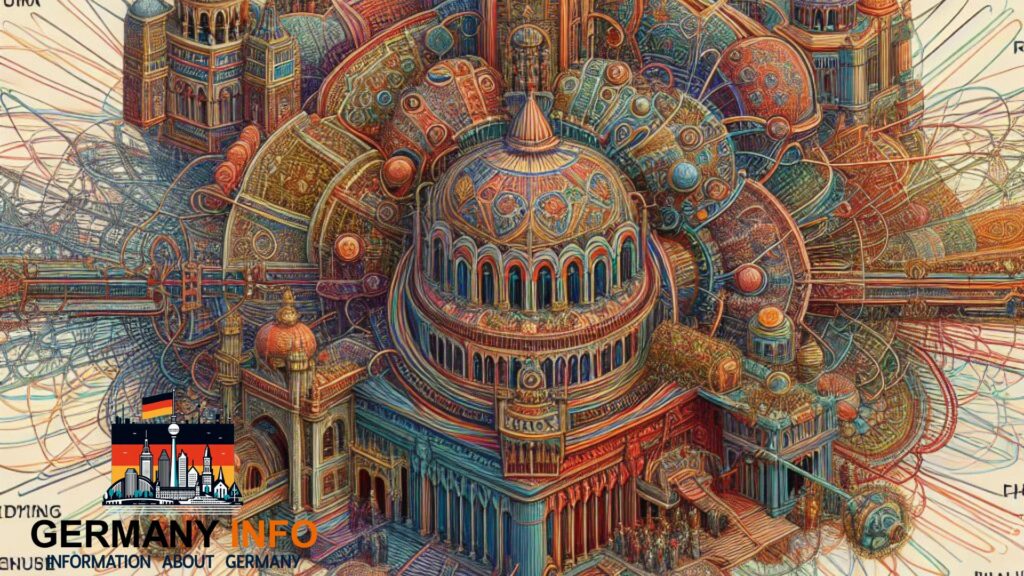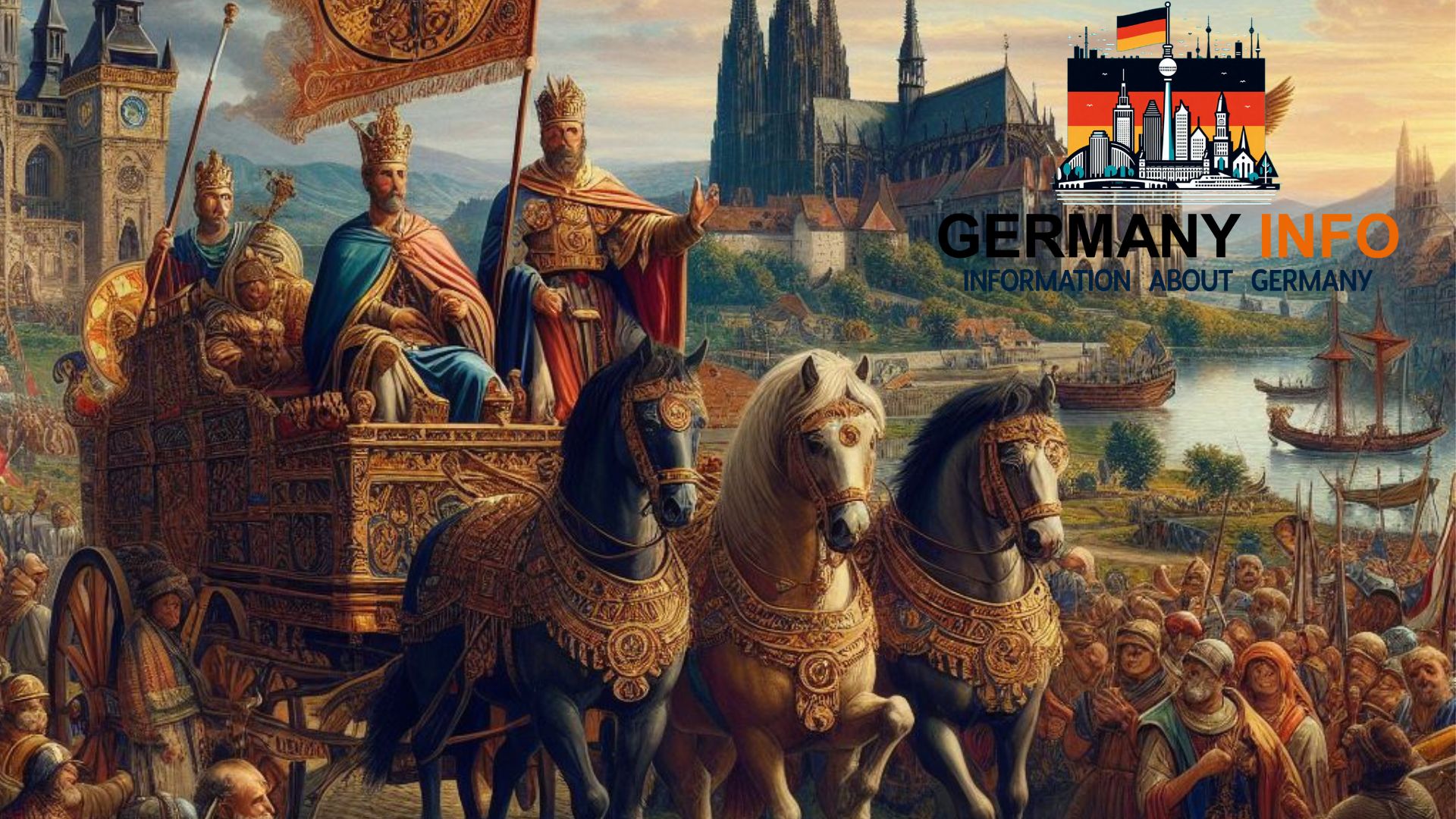The Holy Roman Empire, which existed from the early Middle Ages until its dissolution in 1806, played a crucial role in shaping Germany’s early history and formation. Understanding its origins, structure, and influence provides valuable insights into the development of modern Germany. This article explores the key aspects of the Holy Roman Empire, focusing on its foundation, governance, cultural impact, and eventual decline.
Origins of the Holy Roman Empire
The roots of the Holy Roman Empire can be traced back to the reign of Charlemagne, who was crowned Emperor of the Romans by Pope Leo III on December 25, 800 AD. This event marked the revival of the Western Roman Empire and laid the groundwork for what would become the Holy Roman Empire. Charlemagne’s vast realm included much of Western and Central Europe, and his reign is often considered a turning point in European history.
Charlemagne’s Legacy
Charlemagne’s efforts to unify Europe under Christian rule and his patronage of learning and culture earned him the title “Father of Europe.” His empire, however, was divided among his grandsons after his death, leading to the formation of distinct kingdoms. Despite this fragmentation, the idea of a unified Christian empire persisted, eventually leading to the establishment of the Holy Roman Empire.
Formation and Structure of the Empire

The Holy Roman Empire was formally established in 962 AD when Otto I, Duke of Saxony, was crowned emperor by Pope John XII. This coronation signified the continuation of Charlemagne’s legacy and the beginning of a complex political entity that would endure for nearly a millennium.
Political Organization
The Holy Roman Empire was a decentralized entity composed of numerous semi-autonomous regions, including duchies, principalities, free cities, and bishoprics. The emperor’s power was limited by the influence of these regional rulers, who often acted independently. The relationship between the emperor and the regional leaders was governed by a system of feudal obligations and mutual support.
The Role of the Emperor
The emperor was elected by a group of powerful princes known as the Electors. Initially, there were seven electors, including three archbishops and four secular princes. The election of the emperor was a crucial aspect of the empire’s governance, reflecting the delicate balance of power between the central authority and regional autonomy.
Cultural and Religious Influence
The Holy Roman Empire played a significant role in shaping the cultural and religious landscape of medieval Europe. The empire was a center of learning, art, and architecture, with notable contributions to Gothic architecture and the preservation of classical texts.
Religious Significance
Religion was a central aspect of the Holy Roman Empire, with the emperor often seen as the protector of Christendom. The empire’s close relationship with the Catholic Church led to the establishment of numerous monasteries, churches, and universities, fostering the spread of Christianity and learning throughout Europe.
Artistic and Architectural Contributions
The empire’s cultural achievements include the construction of grand cathedrals, such as the Cologne Cathedral and the Aachen Cathedral, which served as symbols of imperial power and religious devotion. These architectural marvels reflected the empire’s wealth and the importance of religion in its society.
Conflicts and Challenges
Throughout its history, the Holy Roman Empire faced numerous internal and external challenges that shaped its development and eventual decline.
Internal Struggles
The decentralized nature of the empire often led to conflicts between the emperor and regional rulers. These power struggles weakened the central authority and contributed to periods of instability. The Investiture Controversy, a conflict between the papacy and the emperor over the appointment of bishops, is a notable example of the tensions within the empire.
External Threats
The Holy Roman Empire also faced threats from external forces, including invasions by the Magyars, Vikings, and later the Ottoman Empire. These external pressures required the emperor to maintain a delicate balance of power and alliances to defend the empire’s borders.
Decline and Dissolution
The decline of the Holy Roman Empire was a gradual process influenced by both internal and external factors. By the late Middle Ages, the empire had become a fragmented collection of territories with limited central authority.
The Reformation and Religious Wars
The Protestant Reformation in the 16th century significantly weakened the Holy Roman Empire. The rise of Protestantism led to religious conflicts, most notably the Thirty Years’ War (1618-1648), which devastated much of the empire and further eroded the emperor’s power.
The Rise of Nation-States
The emergence of powerful nation-states, such as France and Spain, challenged the dominance of the Holy Roman Empire. The Peace of Westphalia in 1648, which ended the Thirty Years’ War, marked a turning point by recognizing the sovereignty of individual states within the empire, thus diminishing the emperor’s authority.
The Napoleonic Wars and Final Dissolution
The final blow to the Holy Roman Empire came during the Napoleonic Wars. In 1806, facing military defeat and political pressure from Napoleon Bonaparte, Emperor Francis II abdicated and dissolved the Holy Roman Empire. This event marked the end of an era and the beginning of a new chapter in European history.
Legacy of the Holy Roman Empire
Despite its eventual dissolution, the Holy Roman Empire left a lasting legacy on Europe and modern Germany. Its complex political structure and cultural achievements continue to influence contemporary Europe.
Political Legacy
The Holy Roman Empire’s decentralized governance model influenced the development of federal systems in modern Europe. The concept of regional autonomy within a larger political entity can be seen in the structure of modern Germany and the European Union.
Cultural and Religious Impact
The empire’s contributions to art, architecture, and learning had a profound impact on European culture. The preservation and promotion of classical knowledge during the Middle Ages laid the foundation for the Renaissance and the scientific advancements that followed.
Historical Significance
The Holy Roman Empire’s long history provides valuable insights into the development of European political and cultural institutions. Its legacy is evident in the enduring importance of regional diversity and the continuing influence of the Catholic Church in European affairs.
The Holy Roman Empire played a pivotal role in the early history and formation of Germany. From its origins under Charlemagne to its dissolution in 1806, the empire shaped the political, cultural, and religious landscape of medieval Europe. Its legacy continues to influence modern Germany and Europe, highlighting the enduring importance of this historical institution. Understanding the Holy Roman Empire is essential for comprehending the complex tapestry of European history and the development of modern nation-states.

